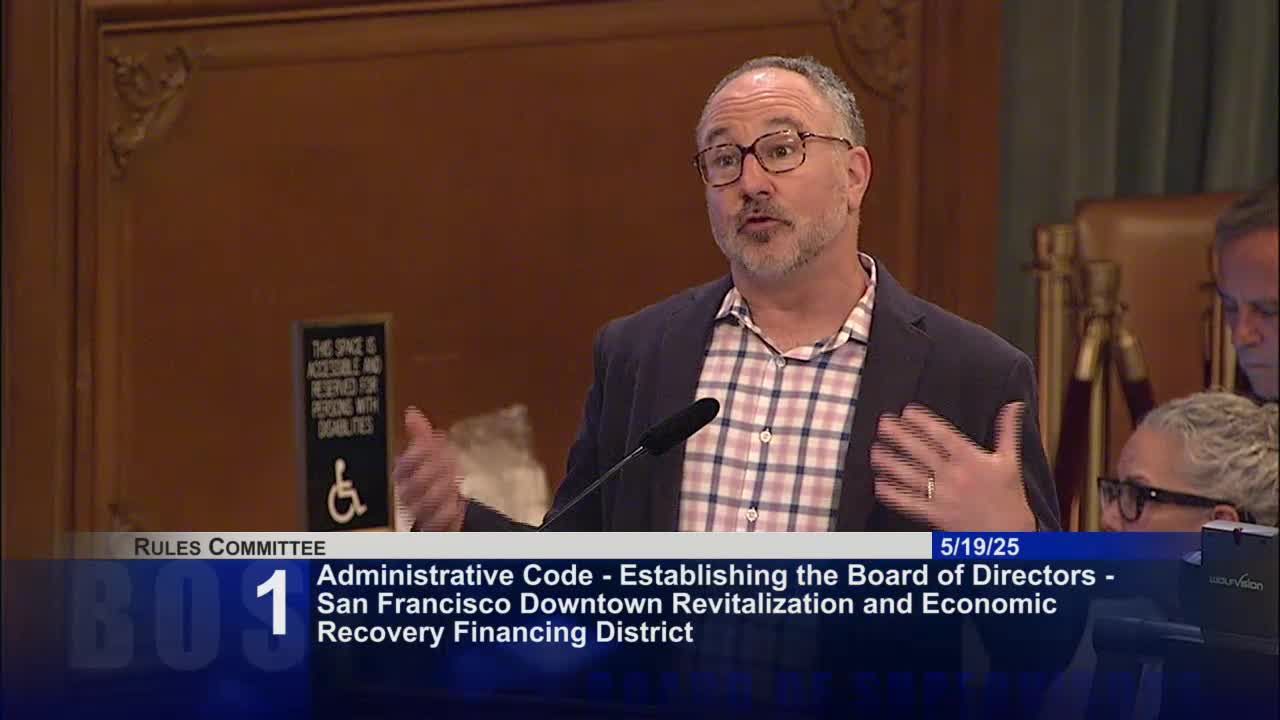SPUR advocates for legislation to reduce transfer taxes for housing conversions
May 19, 2025 | San Francisco County, California
This article was created by AI summarizing key points discussed. AI makes mistakes, so for full details and context, please refer to the video of the full meeting. Please report any errors so we can fix them. Report an error »

The San Francisco County government meeting on May 19, 2025, focused on strategies for converting existing buildings into affordable housing. Key discussions highlighted the importance of reducing certain fees to facilitate these conversions, which are seen as vital for revitalizing downtown areas.
During the meeting, officials reviewed the progress of legislation aimed at easing transfer taxes, impact fees, and property taxes associated with building conversions. These measures were introduced to encourage the transformation of underutilized properties into workforce housing, particularly in areas with existing transit infrastructure. The legislation, which received voter approval in March 2024, is now in its implementation phase, with expectations that it will lead to significant housing developments.
Erica Macleides from SPUR, a civic planning nonprofit, emphasized the potential of these conversions to reshape downtown San Francisco into vibrant, mixed-use neighborhoods. She noted that similar strategies have successfully revitalized urban areas in other cities, turning them into lively hubs that blend housing, retail, and entertainment.
Brianna Morales from the Housing Action Coalition also expressed support for the legislation, underscoring the urgent need for housing solutions in the city. She highlighted the extensive efforts made to ensure that the housing plan is effective and meets the community's needs.
The meeting concluded with a strong consensus on the importance of these legislative changes for the future of San Francisco's urban landscape, aiming to create more economically resilient and socially vibrant neighborhoods. The next steps will involve monitoring the implementation of these measures and assessing their impact on housing availability in the city.
During the meeting, officials reviewed the progress of legislation aimed at easing transfer taxes, impact fees, and property taxes associated with building conversions. These measures were introduced to encourage the transformation of underutilized properties into workforce housing, particularly in areas with existing transit infrastructure. The legislation, which received voter approval in March 2024, is now in its implementation phase, with expectations that it will lead to significant housing developments.
Erica Macleides from SPUR, a civic planning nonprofit, emphasized the potential of these conversions to reshape downtown San Francisco into vibrant, mixed-use neighborhoods. She noted that similar strategies have successfully revitalized urban areas in other cities, turning them into lively hubs that blend housing, retail, and entertainment.
Brianna Morales from the Housing Action Coalition also expressed support for the legislation, underscoring the urgent need for housing solutions in the city. She highlighted the extensive efforts made to ensure that the housing plan is effective and meets the community's needs.
The meeting concluded with a strong consensus on the importance of these legislative changes for the future of San Francisco's urban landscape, aiming to create more economically resilient and socially vibrant neighborhoods. The next steps will involve monitoring the implementation of these measures and assessing their impact on housing availability in the city.
View full meeting
This article is based on a recent meeting—watch the full video and explore the complete transcript for deeper insights into the discussion.
View full meeting
